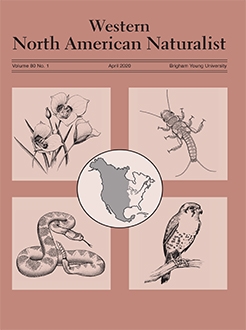We compared the movement patterns of foraging Colorado Checkered Whiptails (Aspidoscelis neotesselata) in 2 different habitat types: shrub-grassland and pinyon pine–juniper woodland. We characterized movement by (1) segmenting movement paths into step lengths and turn angles and (2) determining first-passage times (FPTs). Lizards differed in their pattern of movement in the 2 habitats. FPTs were shorter in the pinyon pine–juniper woodland habitat and were positively correlated with ground cover. Lizards also moved more frequently, had longer step lengths, and traveled greater total distances in the pinyon pine–juniper woodland. There were no habitat differences in turn angles, net displacement, or movement path straightness. Habitat-based differences in movement might reflect differences in prey availability and predation risk.
How to translate text using browser tools
17 February 2020
Habitat-Dependent Search Behavior in the Colorado Checkered Whiptail (Aspidoscelis neotesselata)
Kaera Utsumi,
Carina Kusaka,
Rachael Pedersen,
Catherine Staley,
Lisa Dunlap,
Sophia Gilbert Smith,
Maria A. Eifler,
Douglas A. Eifler
ACCESS THE FULL ARTICLE

Western North American Naturalist
Vol. 80 • No. 1
April 2020
Vol. 80 • No. 1
April 2020





